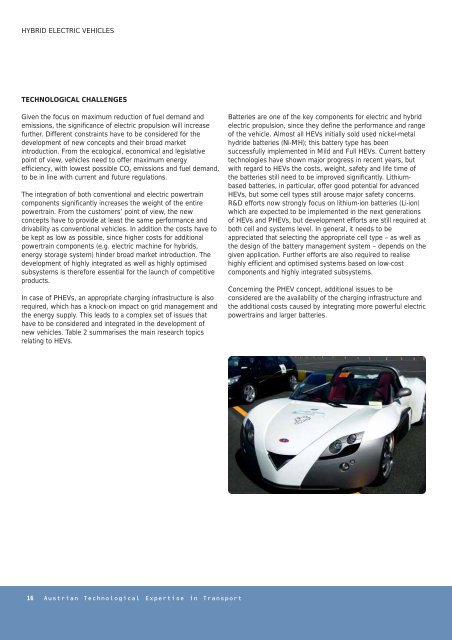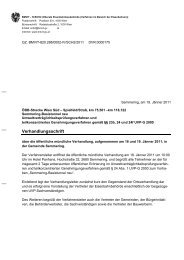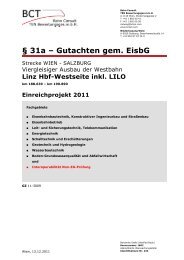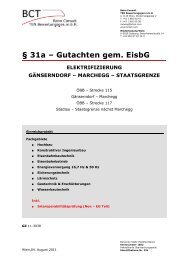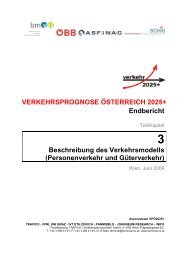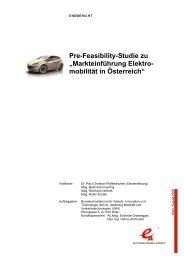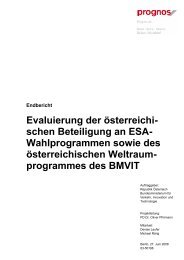Schriftenreihe .;technologiekompetenz Verkehr in
Schriftenreihe .;technologiekompetenz Verkehr in
Schriftenreihe .;technologiekompetenz Verkehr in
You also want an ePaper? Increase the reach of your titles
YUMPU automatically turns print PDFs into web optimized ePapers that Google loves.
HYBRID ELECTRIC VEHICLES<br />
TECHNOLOGICAL CHALLENGES<br />
Given the focus on maximum reduction of fuel demand and<br />
emissions, the significance of electric propulsion will <strong>in</strong>crease<br />
further. Different constra<strong>in</strong>ts have to be considered for the<br />
development of new concepts and their broad market<br />
<strong>in</strong>troduction. From the ecological, economical and legislative<br />
po<strong>in</strong>t of view, vehicles need to offer maximum energy<br />
efficiency, with lowest possible CO 2 emissions and fuel demand,<br />
to be <strong>in</strong> l<strong>in</strong>e with current and future regulations.<br />
The <strong>in</strong>tegration of both conventional and electric powertra<strong>in</strong><br />
components significantly <strong>in</strong>creases the weight of the entire<br />
powertra<strong>in</strong>. From the customers’ po<strong>in</strong>t of view, the new<br />
concepts have to provide at least the same performance and<br />
drivability as conventional vehicles. In addition the costs have to<br />
be kept as low as possible, s<strong>in</strong>ce higher costs for additional<br />
powertra<strong>in</strong> components (e.g. electric mach<strong>in</strong>e for hybrids,<br />
energy storage system) h<strong>in</strong>der broad market <strong>in</strong>troduction. The<br />
development of highly <strong>in</strong>tegrated as well as highly optimised<br />
subsystems is therefore essential for the launch of competitive<br />
products.<br />
In case of PHEVs, an appropriate charg<strong>in</strong>g <strong>in</strong>frastructure is also<br />
required, which has a knock-on impact on grid management and<br />
the energy supply. This leads to a complex set of issues that<br />
have to be considered and <strong>in</strong>tegrated <strong>in</strong> the development of<br />
new vehicles. Table 2 summarises the ma<strong>in</strong> research topics<br />
relat<strong>in</strong>g to HEVs.<br />
16 Austrian Technological Expertise <strong>in</strong> Transport<br />
Batteries are one of the key components for electric and hybrid<br />
electric propulsion, s<strong>in</strong>ce they def<strong>in</strong>e the performance and range<br />
of the vehicle. Almost all HEVs <strong>in</strong>itially sold used nickel-metal<br />
hydride batteries (Ni-MH); this battery type has been<br />
successfully implemented <strong>in</strong> Mild and Full HEVs. Current battery<br />
technologies have shown major progress <strong>in</strong> recent years, but<br />
with regard to HEVs the costs, weight, safety and life time of<br />
the batteries still need to be improved significantly. Lithiumbased<br />
batteries, <strong>in</strong> particular, offer good potential for advanced<br />
HEVs, but some cell types still arouse major safety concerns.<br />
R&D efforts now strongly focus on lithium-ion batteries (Li-ion)<br />
which are expected to be implemented <strong>in</strong> the next generations<br />
of HEVs and PHEVs, but development efforts are still required at<br />
both cell and systems level. In general, it needs to be<br />
appreciated that select<strong>in</strong>g the appropriate cell type – as well as<br />
the design of the battery management system – depends on the<br />
given application. Further efforts are also required to realise<br />
highly efficient and optimised systems based on low-cost<br />
components and highly <strong>in</strong>tegrated subsystems.<br />
Concern<strong>in</strong>g the PHEV concept, additional issues to be<br />
considered are the availability of the charg<strong>in</strong>g <strong>in</strong>frastructure and<br />
the additional costs caused by <strong>in</strong>tegrat<strong>in</strong>g more powerful electric<br />
powertra<strong>in</strong>s and larger batteries.


